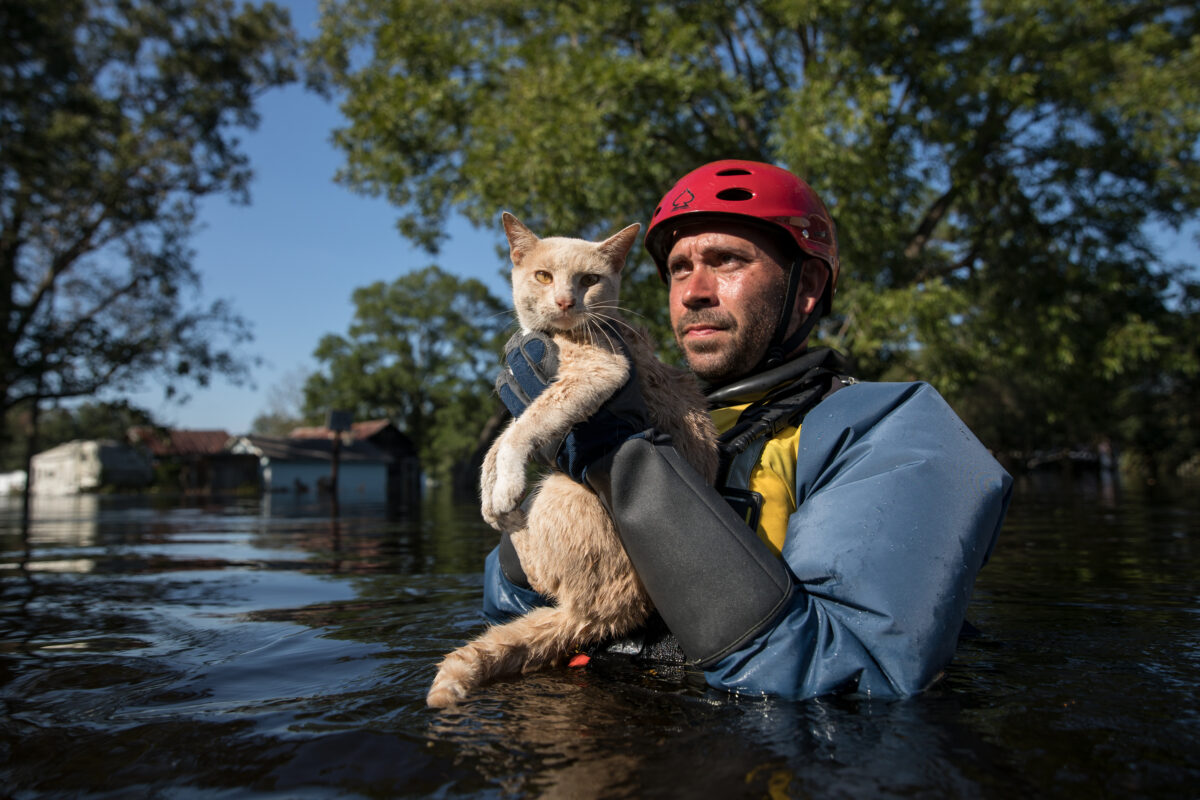Several years ago, my husband and I were hiking with our dog in the woods near our home in a Colorado mountain town when we saw a horrible sight: flames and smoke rising in the air just a few miles away. We watched as helicopters buzzed low to drop red fire retardant on the wildfire.
“We need to get home and pack a ‘go box’ in case we have to evacuate,” he said.
The last time we’d done that, we were fleeing our home in New Orleans as Hurricane Katrina approached.
Some 83 percent of current pet owners live in communities that face natural disasters, according to the ASPCA’s 2021 disaster preparedness survey.
The national survey results also found that more than one in five pet owners have evacuated their homes due to a disaster situation – and of those evacuees, nearly half left at least one pet behind at the time of evacuation, according to Susan Anderson, Director of Disaster Response for the ASPCA National Field Response team.
“Of those who left at least one pet behind, nearly 30 percent cited not having enough time when the disaster struck, further emphasizing the need to prepare for an emergency in advance,” she says. “We want to remind pet owners to always bring their pets with them if they need to evacuate. If it’s not safe for you, it’s not safe for your pet.”
Shelter Considerations
The most important thing you can do when evacuating with pets is to ensure they are safely secured in a pet carrier and that you have handling equipment like a collar and leash, Anderson advises.
“This will help your pet from escaping and getting lost,” she says.
To that end, we should always bring pets indoors at the first sign or warning of a disaster and keep microchip contact information up to date with the registry. Anderson says ID tags should include the pet’s name (or your name), your telephone number, and any urgent medical needs. Also write this information on a carrier in case of an evacuation, she says.
Not all emergency shelters accept pets, so figure ahead of time out where you will bring your pets. Anderson suggests checking with friends and relatives outside your immediate area, researching pet-friendly hotels and motels, asking your veterinarian for a list of preferred boarding facilities, and checking with your local animal shelter to see if it provides emergency shelter or foster care for pets during a crisis.
Create a portable pet emergency kit that includes veterinary records, water, bowls, pet food, and your pet’s medication, and store it as close to an exit as possible, she advises.
“Make sure everyone in the family knows where it is and that it is clearly labeled and easy to carry,” she says.
Special Needs for Birds, Horses
People with birds and horses have special considerations for evacuation planning, according to Anderson. For instance, when transporting a bird in a secure cage or carrier, also bring a blanket or spray bottle depending on the season.
“In cold weather, make certain you have a blanket over your pet’s cage. This may also help reduce the stress of traveling,” she says. “In warm weather, carry a spray bottle to periodically moisten your bird’s feathers.”
Horses should be microchipped, but if that’s not an option, Anderson suggests identifying your horse in some other way, such as a tattoo.
“In an emergency, you can place an ID clip or braid a luggage tag in his mane or tail or paint your phone number on his side with non-toxic paint,” she said.
She also recommends keeping a portable emergency kit for equines that includes the following:
- Paperwork proving ownership of your horse
- Veterinary records, including a current Coggins test if you have it
- A 7- to 10-day supply of feed and water
- Necessary medications
- First-aid kit
“Consider hitching up your trailer in advance to save time in the event of an evacuation,” she says.
Ultimately, evacuating with pets can not only save their lives, but provide comfort to everyone in the family, including children.
“Severe weather events are stressful and scary for people and pets,” Anderson says. “Animals provide incredible love and companionship, especially during times of crisis, and they themselves benefit from receiving that same love and comfort.”
For additional disaster preparedness tips for pets, visit: https://www.aspca.org/pet-care/general-pet-care/disaster-preparedness
This article was reviewed/edited by board-certified veterinary behaviorist Dr. Kenneth Martin and/or veterinary technician specialist in behavior Debbie Martin, LVT.








